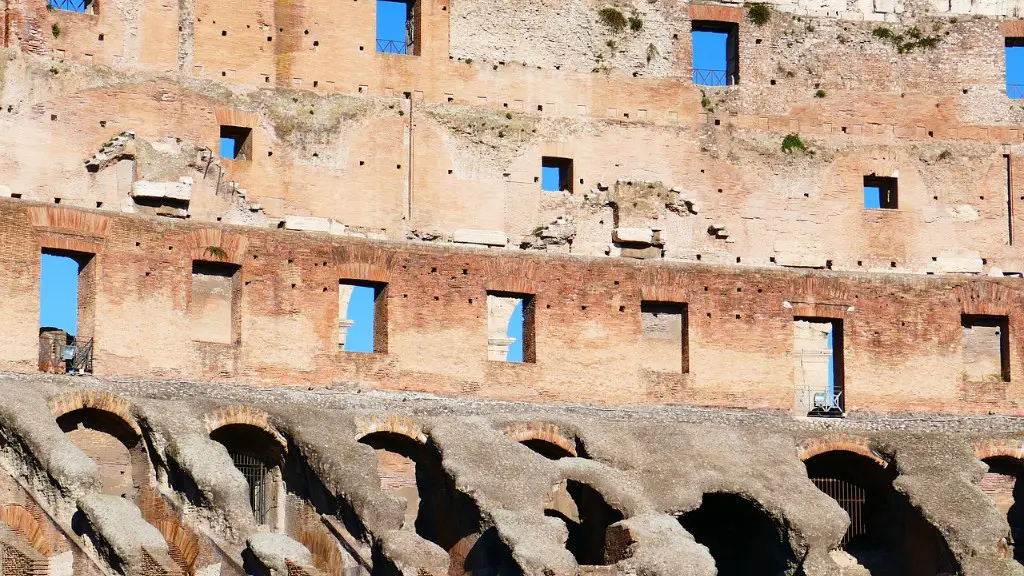There are many ways to measure how “brutal” a society is, and ancient Rome certainly has its share of bloodshed and violence. But it’s also important to remember that Rome was a very different place than it is today. For one thing, life was much shorter then, and people were used to seeing death all around them. infant mortality was high, as was the death rate from disease and accidents. Wars were common, and so were executions. So when we talk about Rome being brutal, we need to keep all of this in perspective.
The Roman Empire was one of the largest and most powerful empires in the ancient world. The Roman army was also one of the most effective and brutal fighting forces in the ancient world. The Roman Empire was known for its many atrocities, including its policy of indiscriminate violence, its use of torture, and its practice of using crucifixion as a form of execution.
Were the Romans brutal or civilized?
Although the Roman Empire seemed like a civilized society to some people, it was actually built on violence and military power. Local inhabitants usually complied with Roman rule because the alternative was often much worse.
The Romans were known for their brutal methods of punishment, and they didn’t hesitate to torture before putting someone to death. One such punishment was sewing a bound prisoner in a heavy sack with a snake, a rooster, a monkey and a dog, then throwing the sack into the river. One can only imagine the agony inside.
How cruel are Romans
The Romans were known for their cruel games, in which people were executed in public, often in painful ways. Torture was a normal thing to do for the Romans, and they often took great pleasure in it.
The Romans were known for their brutal punishments, especially for serious crimes. Crucifixion was reserved for the most serious offenses, such as revolts against the empire. Over time, Roman punishments became increasingly violent.
Who did the Romans fear the most?
The Huns were a group of people who were known for their fighting skills and their ability to cause fear in their enemies. They were able to invade the Roman Empire and cause many people to flee west in the 5th century.
Under Roman law, enslaved people had no personal rights and were regarded as the property of their masters. They could be bought, sold, and mistreated at will and were unable to own property, enter into a contract, or legally marry. This lack of personal rights meant that enslaved people could be subjected to extreme violence, both physical and sexual, with little to no recourse.
How did Romans treat female slaves?
Women in ancient Greece had some legal and social rights, but they were far from equal to men. They could be honoured for their role as priestesses or as mothers and wives, but they could not participate in public life or hold political office. Slaves, on the other hand, had no legal or social standing at all. They could be bought and sold, and their masters had complete control over their lives.
The Roman Army was one of the most successful in the history of the world. The army was a major player in Roman politics and maintaining its loyalty was an essential task for any Emperor. The soldiers of the Roman Army were feared for their training, discipline and stamina. The Roman Army was successful in many battles and helped to expand the Roman Empire.
How did Romans punish slaves
Some people in ancient Rome thought that slaves should be treated better than they were. The poet and philosopher, Seneca, argued that slaves should at least be treated fairly. This was because their lives were very harsh. Slaves were often whipped, branded or cruelly mistreated. Their owners could also kill them for any reason, and would face no punishment.
Roman Emperor Caligula was remembered as the cruelest Emperor because he was a ruthless, wanton killer of Roman citizens, including even his family. No one was safe from his cruel and violent tendencies. Emperor Caligula’s reign of terror ultimately led to his downfall and death.
Were Romans allowed to be crucified?
The Romans employed crucifixion as a method of execution for over 500 years, until it was finally abolished by Constantine I in the 4th century AD. Crucifixion was typically reserved for slaves, disgraced soldiers, Christians, and foreigners – rarely was it ever used on Roman citizens. This barbaric practice involved nailing or tying a person to a cross and leaving them to die a slow and agonizing death. Over time, the Romans perfected the art of crucifixion, making it as painful and humiliating as possible. Thanks to Constantine I, this cruel form of execution finally came to an end.
Crucifixion was a popular method of capital punishment in the ancient world. It was used by the Persians, Carthaginians and Romans, among others. The victim was typically tied or nailed to a large wooden cross or beam and left to hang until eventual death from exhaustion and asphyxiation. Crucifixion was a painful and humiliating way to die, and was often used to send a message of warning or deterrence to others.
How were Roman slaves tortured
Crucifixion was a torture and execution method used by the Romans in which the victim was tied or nailed to a cross and left to hang until death. crucifixion was used to torture and kill countless numbers of slaves. Crucifixion didn’t always involve nailing the accused to a cross. Sometimes, the accused was stripped, his head was covered, and he was tied down onto a cross or fork. He was then flogged, sometimes until he died.
Scaphism, or “The Boat”, was a particularly gruesome form of torture and death reserved for those who the Greeks considered enemies of the state. The victim was stripped naked and bound to a wooden frame in a position that left them vulnerable to attack from all sides. Then, their skin was covered in milk and honey, which attracted hordes of insects. The victim would be left in this position, slowly being eaten alive by the insects, until they died of exposure or dehydration. The whole process could take days, and would have been unimaginably painful. The Persians were said to have been the inventors of this punishment, and if that is true, then they were truly sick people.
What was the most common crime in Roman times?
Crimes against property were some of the most common offenses in Roman times. This could include anything from damage to someone’s house or possessions to harming or killing their wife, children, or slaves. Many of these crimes were similar to ones we see today, such as murder, arson, and vandalism.
The crucifixion of Jesus was a turning point for the Roman Empire and for Christianity. To the Romans, Jesus was a troublemaker who had got his just desserts. To the Christians, however, he was a martyr and it was soon clear that the execution had made Judaea even more unstable. Christianity began to spread, despite the best efforts of the Roman authorities. The story of Jesus, as told by the Christians, was a message of hope and salvation that appealed to many people who were looking for a way out of the turmoil of their lives.
How clean were Roman baths
Bathing was a communal activity in ancient times. The largest known baths could take 3000 people at a time, clean and dirty, healthy and sick. People did not use soap to clean themselves; they preferred to be slathered in oil and scraped clean with a curved implement called a strigil.
It’s no surprise that the Romans would kill someone like Jesus who was seen as a political threat. The Romans were known for killing prophets, brigands, and rebels during the first century. If Jesus was seen as a threat to Roman power, then it makes sense that they would kill him.
Warp Up
Ancient Rome was known for its brutality. The Roman citizens were known for being ruthless in battle and for their willingness to kill. They were also known for their love of violence and their bloodthirsty nature.
Some historians have argued that ancient Rome was an extremely brutal place. Others have argued that the Roman Empire was actually quite peaceful. There is no clear answer, but it is clear that ancient Rome was a complex and fascinating place.





